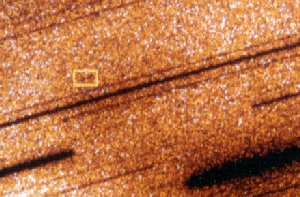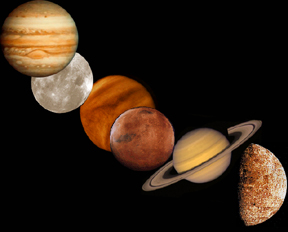Click on image for full size
Courtesy of Dr. Louis A. Frank, The University of Iowa and NASA
Small Comets Bring Water to Earth
News story originally written on March 1, 2001
Scientists have been working for many years to try and figure out how the Earth first came to have water on it. Now there is a new theory -- the Small Comet theory.Dr. Louis Frank and Dr. John Sigwarth have been working been with Small Comets since the early 80's. By using spacecraft images, Frank and Sigwarth were able to see that there were small snowy comets entering the Earth's atmosphere. Dr. Frank and Dr. Sigwarth also used the Iowa Robotic Observatory (IRO) in Arizona to take pictures of small comet streaks.
With all of this evidence in support, it does appear that there are about 20 snow comets weighing 20 to 40 tons each that crash into the Earth's atmosphere every minute. The comets are no danger to life on Earth because they fall apart in the atmosphere. In fact, these Small Comets might have been very beneficial to life on Earth. In the Small Comet theory, Frank and Sigwarth propose that the water in the Earth's oceans might have arrived by way of these small snow comets.
Dr. Louis Frank has been a University of Iowa faculty member since 1964. He has been the experimenter, co-investigator or principal investigator for instruments on 42 spacecraft! Dr. John Sigwarth has been Research Scientist at the University of Iowa
since 1989. He currently is project scientist for the Visible Imaging
System on the Polar spacecraft of NASA Goddard Space Flight Center.















